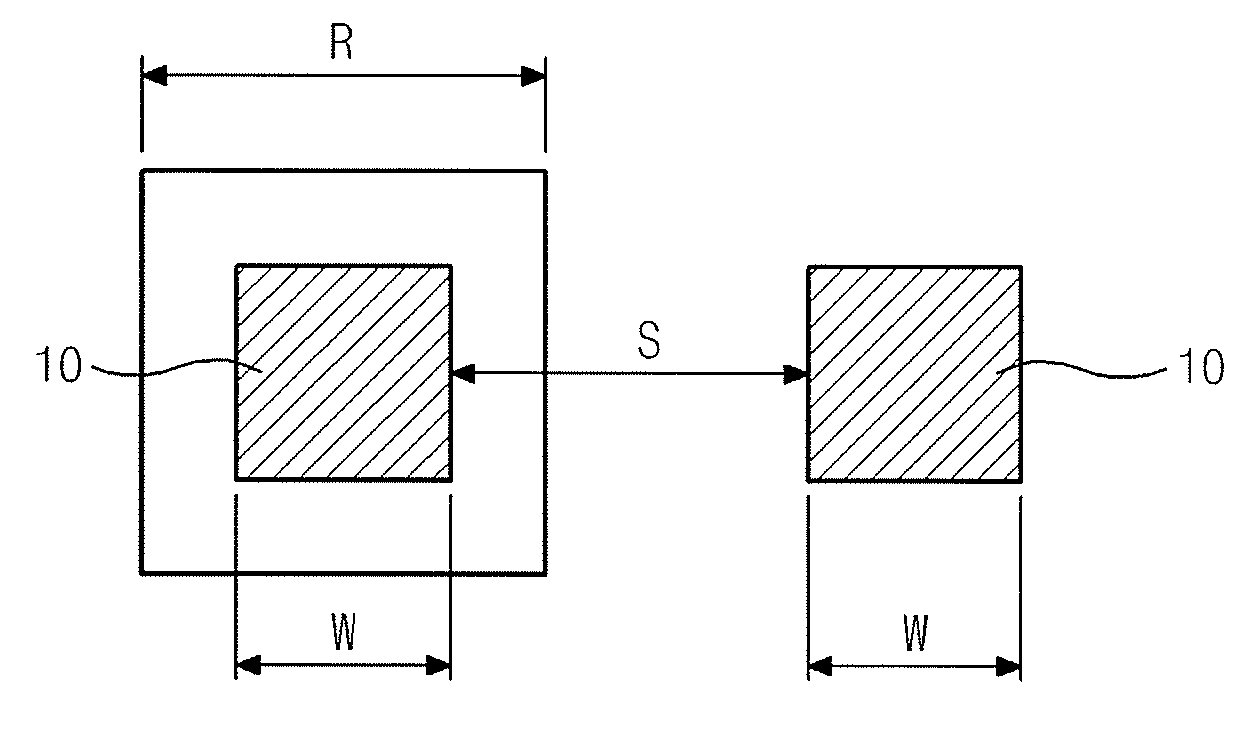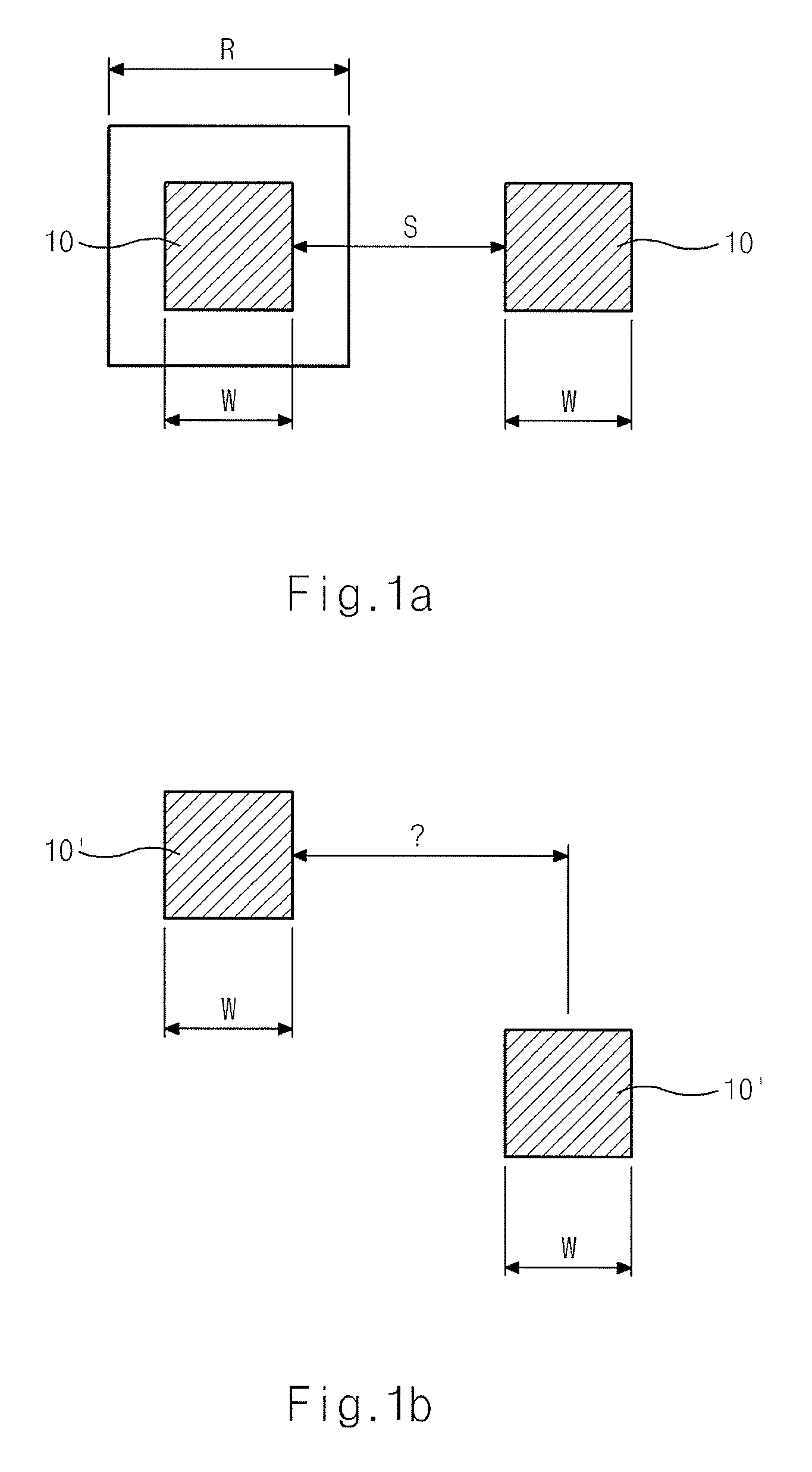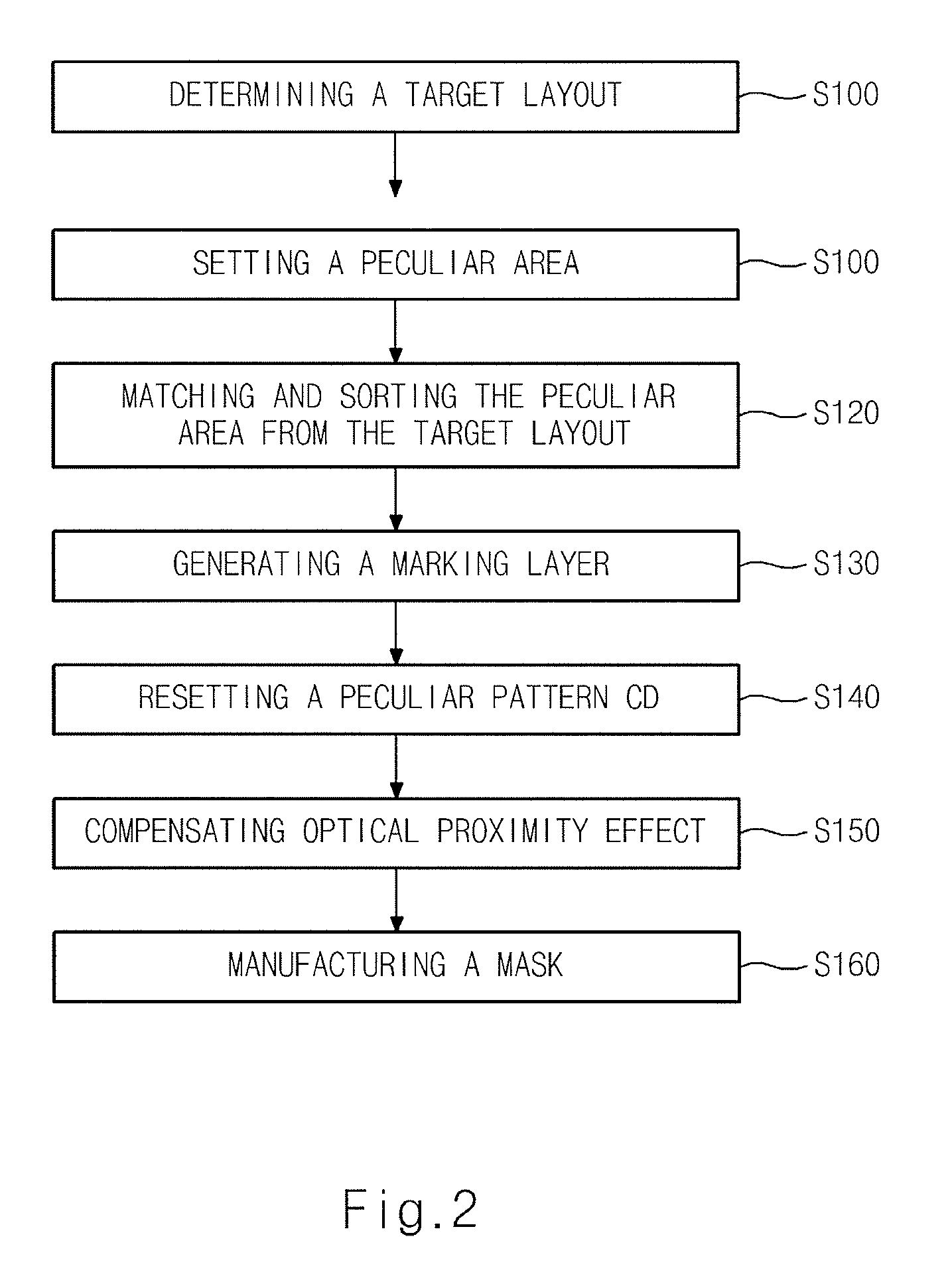Method for optical proximity correction
- Summary
- Abstract
- Description
- Claims
- Application Information
AI Technical Summary
Benefits of technology
Problems solved by technology
Method used
Image
Examples
Embodiment Construction
[0028]The present invention relates to an optical proximity correction method in which an optical proximity correction is performed by sorting a peculiar area from a target layout and resetting a critical dimension (CD) of a design pattern based on the sorted layout so that, in case where a pattern, such as a contact hole pattern that does not have any pattern adjacent thereto to render it difficult to apply a bias rule, the bias rule can be reflected by performing optical proximity correction, thereby improving the accuracy of the optical proximity correction. Therefore, a uniformity of a final pattern can be secured. Hereinafter, the example embodiments of the present invention will be described in detail with reference to the accompanying drawings.
[0029]FIG. 2 is a flowchart illustrating an optical proximity correction method according to an exemplary embodiment of the present invention. FIGS. 3a through 3c illustrate a peculiar area according to an exemplary embodiment of a pres...
PUM
 Login to View More
Login to View More Abstract
Description
Claims
Application Information
 Login to View More
Login to View More - R&D
- Intellectual Property
- Life Sciences
- Materials
- Tech Scout
- Unparalleled Data Quality
- Higher Quality Content
- 60% Fewer Hallucinations
Browse by: Latest US Patents, China's latest patents, Technical Efficacy Thesaurus, Application Domain, Technology Topic, Popular Technical Reports.
© 2025 PatSnap. All rights reserved.Legal|Privacy policy|Modern Slavery Act Transparency Statement|Sitemap|About US| Contact US: help@patsnap.com



